One question I frequently receive from homeowners concerns whether it’s against the law to fell trees on their own land. I figured it would be beneficial to address this query for anyone else curious about the same issue.
It is NOT illegal to remove a tree on your property IF the tree is not protected by the city.
Every city and county has what is called a Tree Protection Ordinance1 which is a list of Regulations/ laws for the removal of trees.
What we cover
ToggleHow do I know if my tree is protected?
There are a couple of ways to find out.
- Go here and select your state > city to be directed to the local laws for tree removal.
- Speak to an arborist in your area and ask them if it’s okay to remove your tree.
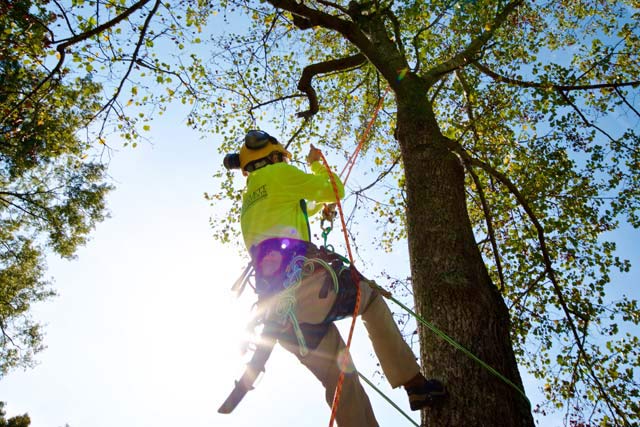
Universal Exemptions:
There are some cases where a permit is not required in most cities. You will need to double-check, but if the tree is one of the following you will not need a permit to remove it:
- Dead trees
- Fallen trees
- Dangerous trees
- Non-protected trees
- Local pest species
Again, you will need to refer to your city or county’s Tree Protection Ordinance to see whether you can remove your tree without a permit.
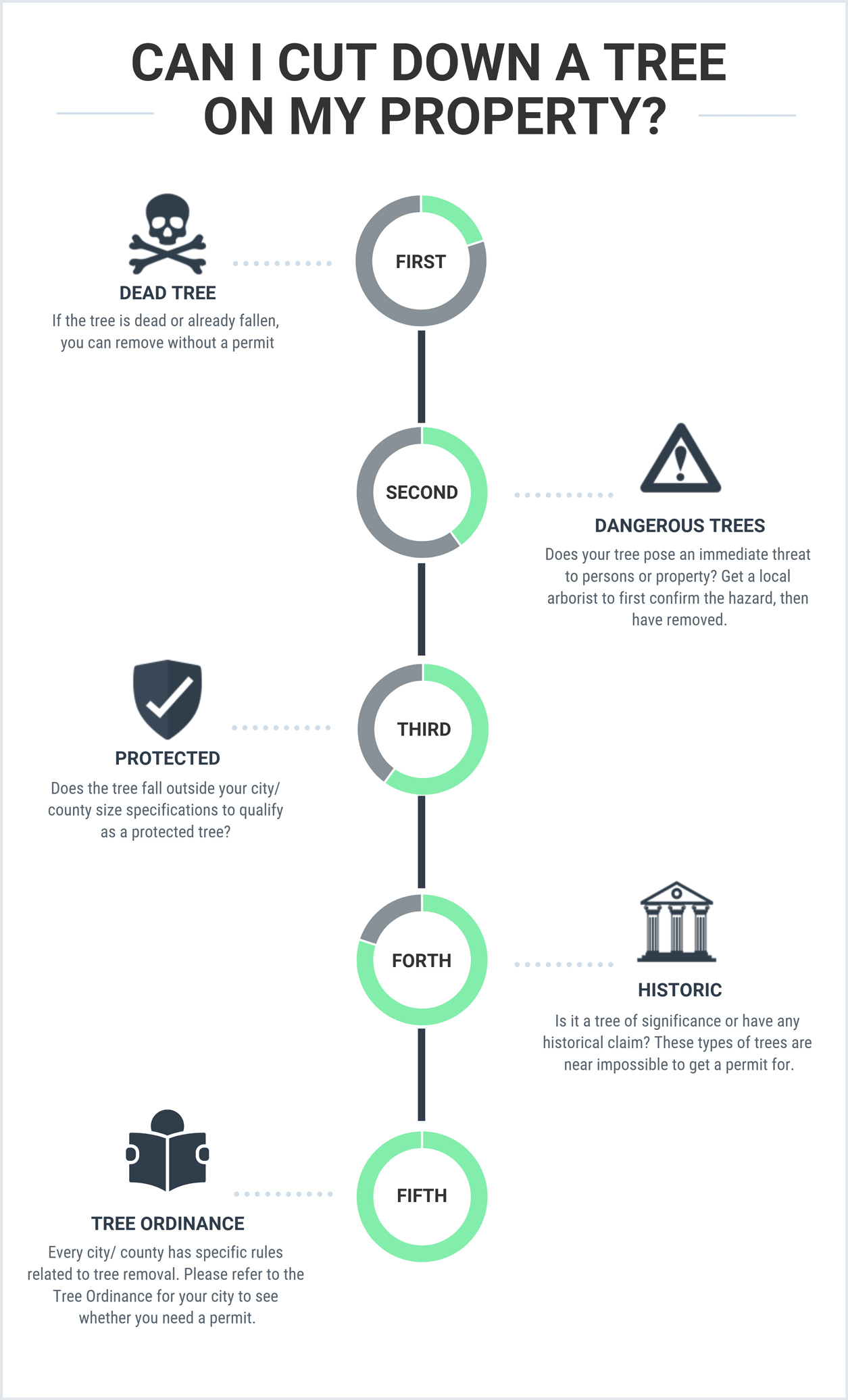
Where can I find the rule on tree removal for my city?
Follow this link to see a full list of states and cities. Select your city to view the Tree ordinance.
Having trouble Understanding it?
This is pretty normal as lawyers write them, and most of the time, they are clear as mud.
Another way would be to go to your local city or county‘s website and search for;
“rules on tree removal permits [your city here]”.
You may have to search for words such as “Tree Removal Ordinance” and “Tree Removal Permit”.
Also, visit our homepage for links to cost guides on arborists and tree removal and compare prices from local pros online for free.
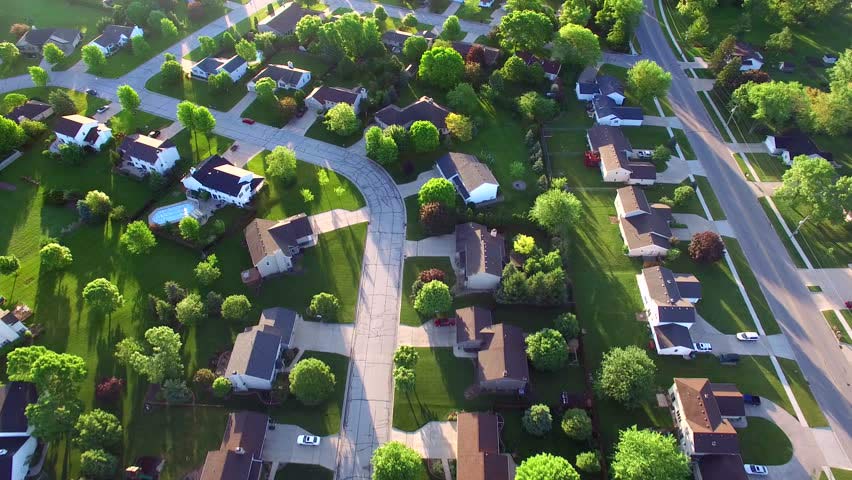
Do I have legal authority over trees on my property?
Surprisingly the answer is no. All trees within your city are actually considered community trees.
You do not “own” the tree just because they happen to reside on your property. The reason for this is that trees bring a huge benefit to the community as a whole such as cleaning the air we breathe, reducing the heat island effect, and creating habitat for local wildlife.
Cities regulate what trees can be removed or trimmed. Plus other guidelines regarding the ideal number of trees that should be planted and maintained on a property of a certain lot size.
As each city has different trees, local climates, and ecosystems, the regulations surrounding the tree removal laws vary greatly from state to state.
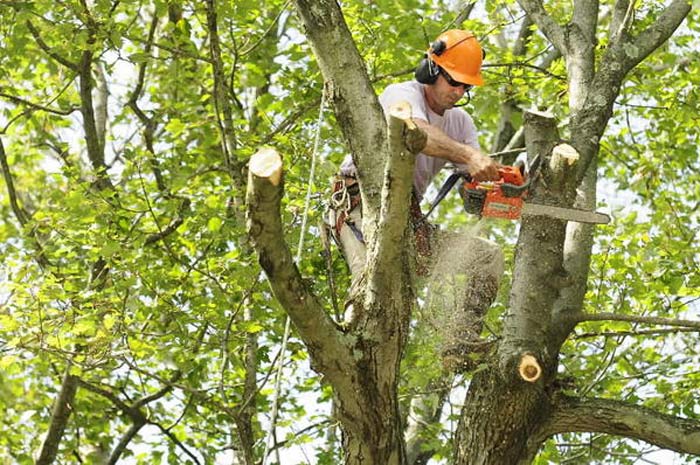
What if the tree is dangerous/ unstable, Can I legally remove it?
If there is a tree on your property that presents an immediate risk to persons or property, it may be removed without waiting on a permit from your city.
I do suggest that you seek confirmation from a certified arborist that the tree is hazardous and needs to come down immediately.
To save yourself any headaches after the tree has been removed, make sure you document the reason why the tree is dangerous with photographs and with a written report from a certified local arborist whom you get in to remove the tree.
So how do I know if a tree is dangerous or hazardous?
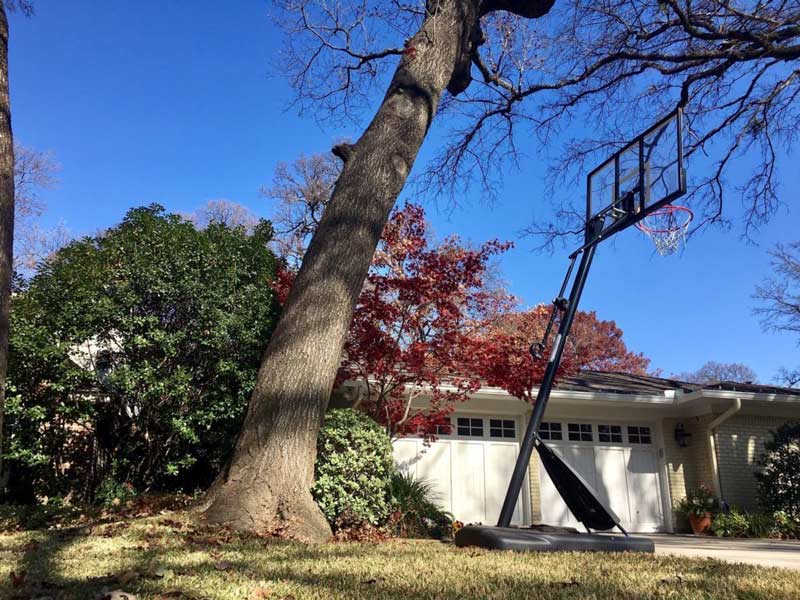
In a lot of cases, a tree will become unstable after a storm. After a few days of extended rain and wind the ground becomes soft and trees that don’t have a naturally stable root system will develop a noticeable lean quite quickly.
If you notice a tree on your property has developed a new lean, even a slight one, it is a good idea to seek the advice of a qualified arborist. They will be able to quickly identify whether the tree needs to be removed or not. They also have to authority to act immediately on their recommendations and remove the tree without a permit.
In other cases such as internal rot and weak branch unions, it is a lot more difficult to tell if a tree is hazardous. It is also always a good idea to get a tree inspection and arborist report every few years to make sure that your tree is safe.
Is it illegal to cut down a dead tree without a permit?
Most of the time (99% of the time) the answer is no. Dead trees especially if they have been considered dead for an extended period are considered hazardous. You will not need a permit to remove a dead tree.
If a dead tree is left in place for an extended period, the stabilizing roots in the ground will rot away in time, and the tree will easily blow over in the next storm.
You are obligated to maintain all trees on your property and that includes the removal of dead trees.
I do not suggest removing a dead tree on your own and you are best seeking the dead tree service of a qualified and licensed arborist in your city.
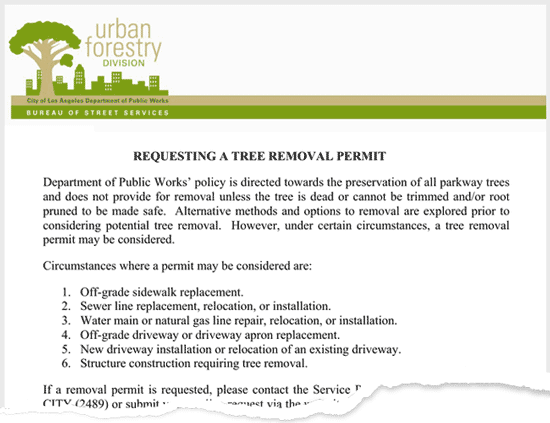




Will I need permission to remove a tree on my property?
Whether permission is needed to remove a tree on your property will depend on the size of the tree, the location of the tree on your property and its proximity to your home, and other utilities such as power lines.
It will also depend on the tree species and whether that particular tree species is protected or considered a nuisance.
In all cities, there is what is known as a Tree Preservation Ordinance. In this ordinance, the city outlines a specific size of the tree which is automatically considered significant and becomes protected under the ordinance laws.
A heritage tree is one that has been documented to have been part of the community for 50 years or more.
An example of a common regulation that can be found in a Tree Ordinance would be;
Any tree with a trunk circumference smaller than 12 inches may be removed without a permit. Anything larger will be considered a significant tree and therefore protected. In this case, you will need permission to remove the tree.
Again the above is just an example and in your particular case, you will need to refer to the local laws that govern tree removal in your city.
What is the fine for illegally removing trees?
This will depend on the city you live in and the significance of the tree you have removed.
For example, if it is illegal to remove a palm tree without permission in your city and you have done so, you might receive a fine of $500.
On the other hand, if you have to remove a 150-year-old Oak tree that stands 50 feet high and was home to a rare and endangered breeding pair of owls, you could imagine the fine would be a lot steeper.
I’ve heard of some people being fined up to $5000 for removing a single tree without a permit from the city.
In conclusion, I think it is a good idea to know the rules and regulations for cutting down trees on your property before you do so. In most cases, you find the city is very fair and will allow you to remove a tree that you were not happy with as long as it is replaced with a new Sapling.
It’s always a good idea to remember the trees bring with them a quality of life for people living around them that cannot be equated in dollars.
We have already mentioned they clean the air and reduce your cooling costs in the summer, but there is also a lot to be said about the calming effects of having nature right on your doorstep.
- NC State Extension Publications, (2019) Developing Successful Tree Ordinances. <https://content.ces.ncsu.edu/developing-successful-tree-ordinances> Accessed: 15-02-2024.










